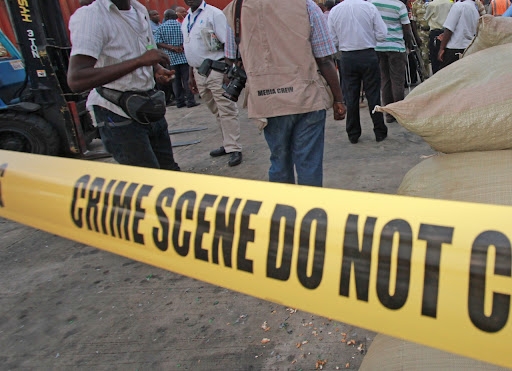Likoni’s Nabil Saad, 26, has seen it all.
Forced to work for long hours in harsh conditions without pay, his supposed heaven in Riyadh, Saudi Arabia, turned to hell.
When he travelled to the Gulf nation for the second time in February 2018, he assumed it would be smooth sailing like the first time in 2015.
He was recruited as a driver at Al Mawarid Recruitment Company through a local agent.
“The first two-year contract from 2015 was good and I completed it without any issue. Issues started after working for three months under my second two-year contract,” Saad recalled.
New management promoted him but slashed his pay.
“They didn't pay even a quarter of what I was earning during my first contract. I could not cater for my wife and child well,” Saad tells the Star.
After refusing to work as a slave, his employer arranged for his arrest and sentencing to two months in jail despite, the sheikh (judge) declaring he has done nothing wrong.
He stayed in jail for six months.
“I also received 80 strokes of the cane," Saad said.
“They wanted me to stay in jail until the day they decide dI had had enough punishment but our Kenyan Embassy would hear none of that.”
Nabil Saad is just one of the thousands of Kenyans being trafficked without knowing they would become slaves.
As the world commemorated the Day Against Trafficking on Tuesday, Trace Kenya and the International Organization for Migration (IOM) painted a grim picture of the situation in Kenya, especially at the Coast.
The region has been identified as a trafficking hotspot. Kenya is a source, transit point and destination for both labour and sexual exploitation.
“That is a key concern not just for Kenya itself but also for the international community,” said IOM’s Romina Santa Clara.
This is because increasingly, people today are being trafficked without their realising what will happen to them.
“Anybody can be a victim . You have to remember that,” Santa-Clara said.
Trafficking victims are usually promised education or work.
Trace Kenya and IOM are running a community awareness programme to help the community fight against human trafficking by identifying signs and forms of exploitation — and taking action.
“You don’t have to keep quiet. You can help by sharing information on hotlines of the government. You can refer them to the government or NGOs like Trace Kenya,” Santa Clara said.
Trace Kenya program coordinator Malath Ochieng said low literacy levels contribute to the vulnerability of potential victims.
In the 15 years Trace Kenya has been working at the Coast, it has rescued 738 people.
These are victims of external trafficking although there are victims of internal trafficking too.
A transnational crime syndicate can promise heaven to entice tvulnerable communities.
Human trafficking is estimated to be worth at least $150 billion (about Sh15 trillion).
Santa Clara said it is difficult to know when someone is a victim, hence, it's difficult to estimate the number of victims.
Most victims also do not come out to report even when they realise they are being exploited, which is usually very late.
Ochieng said in most cases, victims are lured by greener pastures.
“There are opportunities in Kenya. They are just not being exploited enough,” Ochieng said.
“Many people do not know what human trafficking is. They just say they were duped by promises of job opportunities. It is only upon rescue that they realise they were victims of human trafficking,” Ochieng said.
She urged Kenyans to follow the right procedures when travelling abroad.
Kilifi North and South children's officer Kennedy Owino said there are many victims of internal human trafficking in Kilifi, especially children.
“There are children as young as 13-year-olds who fall victim. They may be brought from Kwale, Malindi or Busia to work in Kilifi or Mombasa as domestic workers. In most cases, they work in difficult conditions,” Owino said.
He said human trafficking affects children the most because they are left to face life on their own even when they are not the primary victims.
“In Kilifi a six-year-old girl was defiled by her 16-year-old first cousin because her mother left her under the care of the girl's aunt as she went to Saudi Arabia to work for three years,” Owino said.
The girl is to undergo corrective surgery after developing fistula due to the ordeal.
“The cost of treating this child is even more expensive than what her mother made in Saudi Arabia," Owino said. "The future of the child has completely been destroyed."
(Edited by V. Graham).











